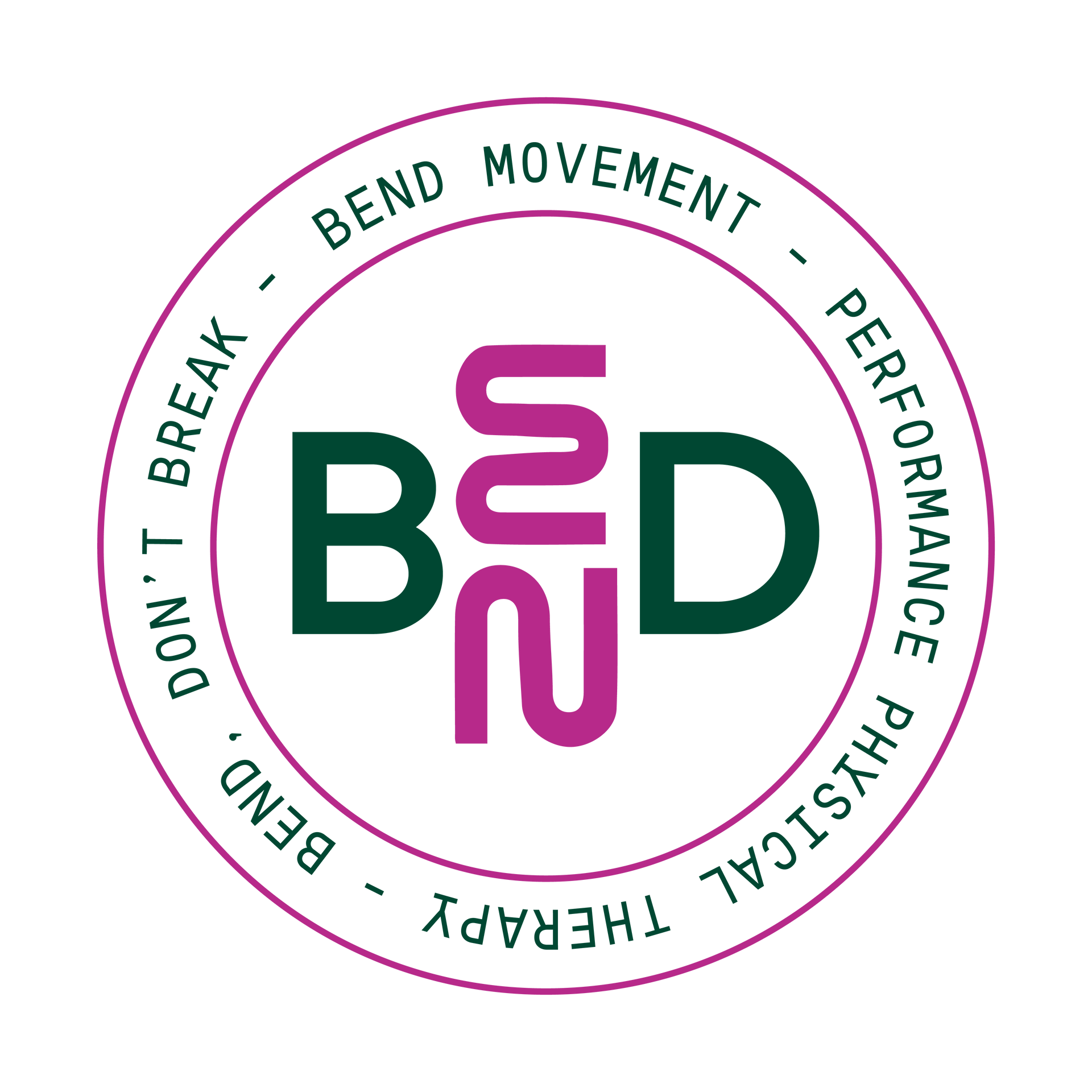Navigating Pain, Injury, and Recovery
Catogories
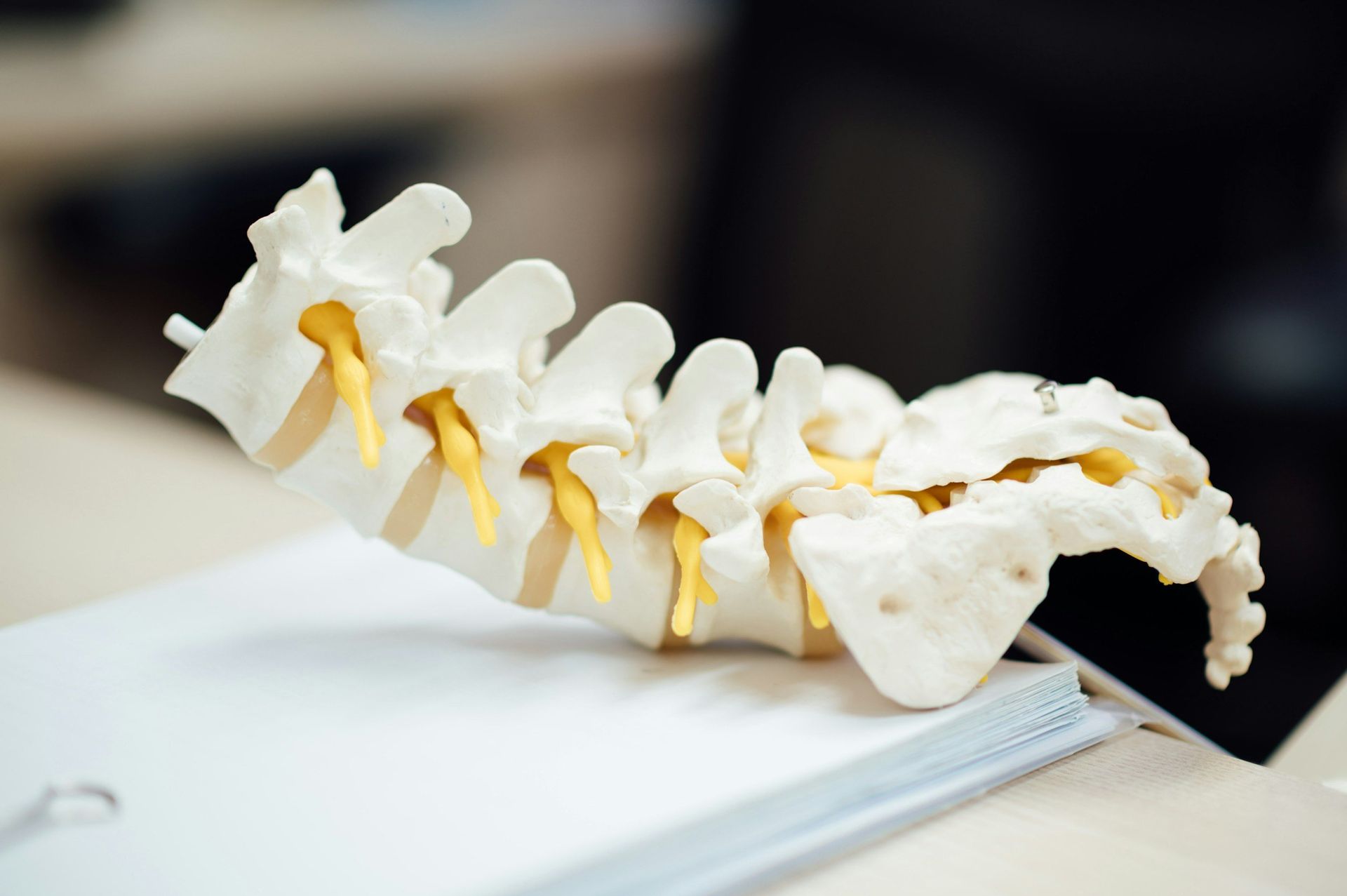
From Stiff and Stuck to Moving Freely Again: John’s Low Back Story When John first came into Bend Movement Physical Therapy, he was struggling with constant low back pain. Both sitting and standing for long periods was tough. Even simple tasks like tying his shoes or standing at a concert left him stiff, uncomfortable, and frustrated. He tried to stretch it out at home, but the pain kept coming back. During his first session, we took the time to look deeper into his movement health - not just at his back, but how his whole body was moving. John had some stiffness through his hips that was putting extra stress on his spine. Our treatment included hands-on techniques, like dry needling and traction, to calm down the tightness first. Once John was feeling a little better, we shifted our focus to building strength. He worked through a customized exercise plan built for his SPECIFIC needs - not a generic, cookie-cutter program. We also checked in monthly to tweak his home program as he improved, making sure he kept moving forward without plateauing. One of the biggest differences with cash-based physical therapy is the freedom to treat the whole problem, rather than just chase symptoms. John got personalized care every step of the way, and he noticed it. Fast-forward a few months later, and John’s back to biking the Capital Trail and hasn’t had a single flare-up in over a month. Helping active adults in Richmond and Henrico get back to the things they love, without relying on band-aid solutions, is exactly what Bend Movement Physical Therapy is all about. Schedule your discovery call with us today at www.bendmvmt.com/contact
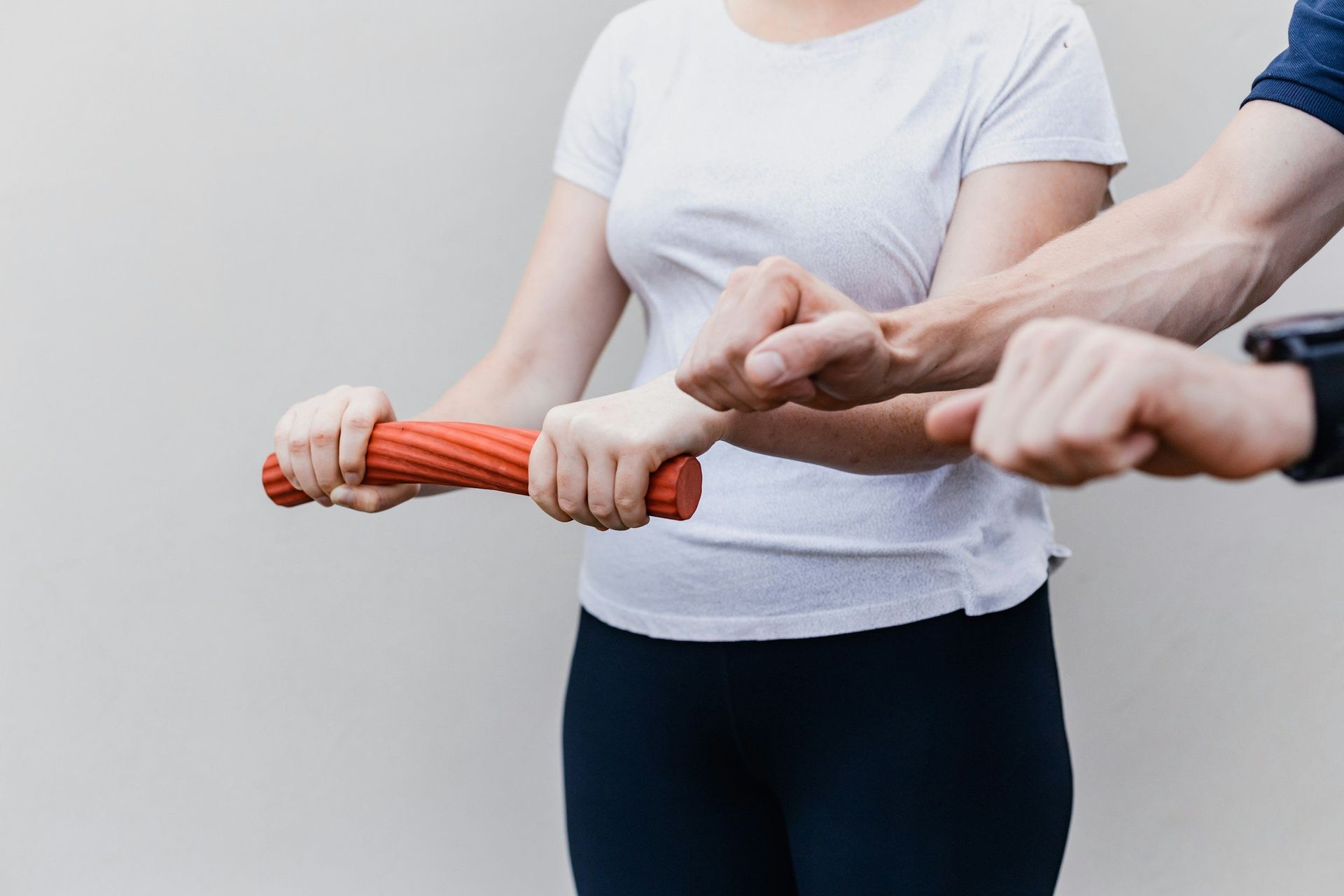
Pain-Free Mobility: Addressing Common Sports Injuries with Bend Movement in Richmond Sports injuries are an unfortunate reality for athletes and active individuals, often sidelining them from the activities they love. From minor sprains to significant muscle tears, these injuries not only cause physical pain but also disrupt routines, goals, and aspirations. In Richmond, VA, Bend Movement Physical Therapy specializes in treating sports injuries with a comprehensive and personalized approach through physical therapy . By addressing the root causes of injuries and focusing on long-term recovery, they empower athletes to regain pain-free mobility and prevent future setbacks. The Toll of Sports Injuries on Athletes Athletes subject their bodies to intense physical demands, which can lead to injuries ranging from overuse issues to acute trauma. Common injuries such as sprained ankles, torn ligaments, and muscle strains are prevalent across various sports. These injuries often result from improper mechanics, muscular imbalances, or insufficient recovery time. Injuries not only limit physical ability but also affect mental resilience. Athletes may struggle with frustration, fear of reinjury, or a loss of confidence. At Bend Movement , physical therapy goes beyond treating the injury itself—it addresses the broader impact on an athlete’s life, ensuring that they return stronger both physically and mentally. How Bend Movement Treats Sports Injuries in Richmond Bend Movement Physical Therapy takes a tailored and evidence-based approach to injury recovery. Their programs are designed to meet the unique needs of each individual, whether they are recovering from a knee injury, managing shoulder pain, or addressing chronic discomfort. Comprehensive Assessment The process begins with a thorough evaluation of the athlete’s condition. Therapists assess the injury’s severity, analyze movement patterns, and identify underlying issues such as muscular imbalances or improper mechanics. This holistic understanding forms the foundation of a personalized recovery plan. Individualized Treatment Plans No two injuries are alike, and Bend Movement tailors every program to the patient’s specific needs. For instance, a runner recovering from shin splints might focus on improving calf strength and stride mechanics, while a tennis player with a shoulder injury works on stabilizing the rotator cuff and improving arm mobility. Pain Management and Recovery Manual therapy techniques, including joint mobilizations and soft tissue release, are used to alleviate pain and reduce inflammation. These hands-on approaches promote healing and prepare the body for more active therapy. Strengthening and Stability Work Building strength is a critical component of injury recovery. Bend Movement incorporates targeted exercises to restore muscle function and improve stability around the injured area. For example, athletes with ACL injuries may engage in progressive resistance training to strengthen the quadriceps and hamstrings. Rehabilitation Through Functional Training Functional exercises replicate real-life movements, helping athletes transition from therapy to full activity. These exercises ensure that strength and mobility gains translate directly into improved performance on the field or court. Injury Prevention Strategies A key focus of Bend Movement’s approach is preventing future injuries. Therapists educate patients on proper techniques, warm-up routines, and recovery practices to reduce the likelihood of recurring issues. From our blog: The Importance of a Specific Warm-Up OutsideActivity with Shorter Days Mobility and Strength on the Go: Traveling with Minimal Equipment Pain Isn’t Always Where the Problem Lies Embracing Discomfort in the Rehab Process The Path to Pain-Free Mobility Restoring mobility is at the heart of every recovery program at Bend Movement. Injuries often lead to stiffness and reduced range of motion, which can hinder athletic performance and daily activities. By incorporating dynamic stretching, joint mobilizations, and mobility drills, Bend Movement helps athletes regain flexibility and fluidity in their movements. Patients who complete their programs report not only pain relief but also improved physical capabilities. Many find that they are more aware of their bodies, enabling them to move with greater confidence and efficiency. This renewed sense of control over their mobility empowers athletes to return to their sports without fear of reinjury. The Long-Term Benefits of Therapy at Bend Movement Physical therapy for sports injuries at Bend Movement extends beyond immediate recovery. The clinic’s emphasis on holistic care ensures that patients leave with the tools and knowledge to maintain their progress. By addressing the root causes of injuries and focusing on preventive care, Bend Movement fosters long-term health and resilience. For example, athletes recovering from repetitive stress injuries often learn techniques to optimize their biomechanics, ensuring that their bodies can handle the demands of their sport without strain. Similarly, patients with chronic pain are equipped with exercises and self-care strategies that allow them to manage their condition effectively. These long-term benefits not only improve athletic performance but also enhance overall quality of life. Patients find themselves able to engage fully in their passions, whether competing at a high level or simply enjoying recreational activities. Why Richmond Athletes Trust Bend Movement Physical Therapy Bend Movement Physical Therapy has become a trusted partner for athletes in Richmond, VA, thanks to their commitment to personalized care and measurable results. Their team of skilled therapists understands the unique challenges faced by athletes, offering targeted solutions that address both the symptoms and root causes of injuries. What sets Bend Movement apart is their holistic approach to recovery. By combining traditional physical therapy with functional training, they ensure that patients not only heal but also gain the strength, mobility, and confidence needed to thrive. Conveniently located in Richmond, VA, Bend Movement serves athletes of all levels, from weekend warriors to professional competitors. Whether recovering from an injury, managing chronic pain, or seeking to improve performance, patients can rely on the clinic for expert guidance and support. For athletes ready to regain their pain-free mobility and excel in their sport, Bend Movement Physical Therapy offers the expertise, innovation, and care needed to succeed.

What’s the Point of Pain? If you’ve ever been in pain, you might have wondered why it exists. Pain’s main job is to protect the body—it’s like an alarm system designed by evolution to keep us safe. But what does that really mean, and how does it work? Pain protects us in three main ways: it keeps us safe from danger, teaches us lessons to avoid future harm, and helps injuries heal. For example, touching something hot makes you pull your hand away before you even think about it. This quick reaction helps prevent serious damage. Even animals like squid become more cautious after an injury, showing how pain evolved as a survival tool. Pain works through a network of nerve cells that send warning signals to the brain. But it’s not just physical. Pain is influenced by factors like stress, sleep, and emotions, which can make it feel worse even if the body isn’t more injured. Understanding this helps explain why pain sometimes lingers longer than expected or flares up without a clear cause. Knowing that pain’s purpose is protection changes how we approach it. Instead of seeing pain as the enemy, we can view it as a guide. It’s a reminder to take care of our bodies—whether that means resting, reducing stress, or working on overall health. Pain isn’t fun, but it’s an important part of how we survive and heal. By understanding it better, we can find smarter ways to manage it and get back to doing what we love. If you want help getting out of pain - you’ve come to the right place! At Bend Movement Physical Therapy in Richmond, Virginia, we specialize in providing individualized care to get you moving and feeling your best. Schedule a discovery call here and come visit our office in Henrico!
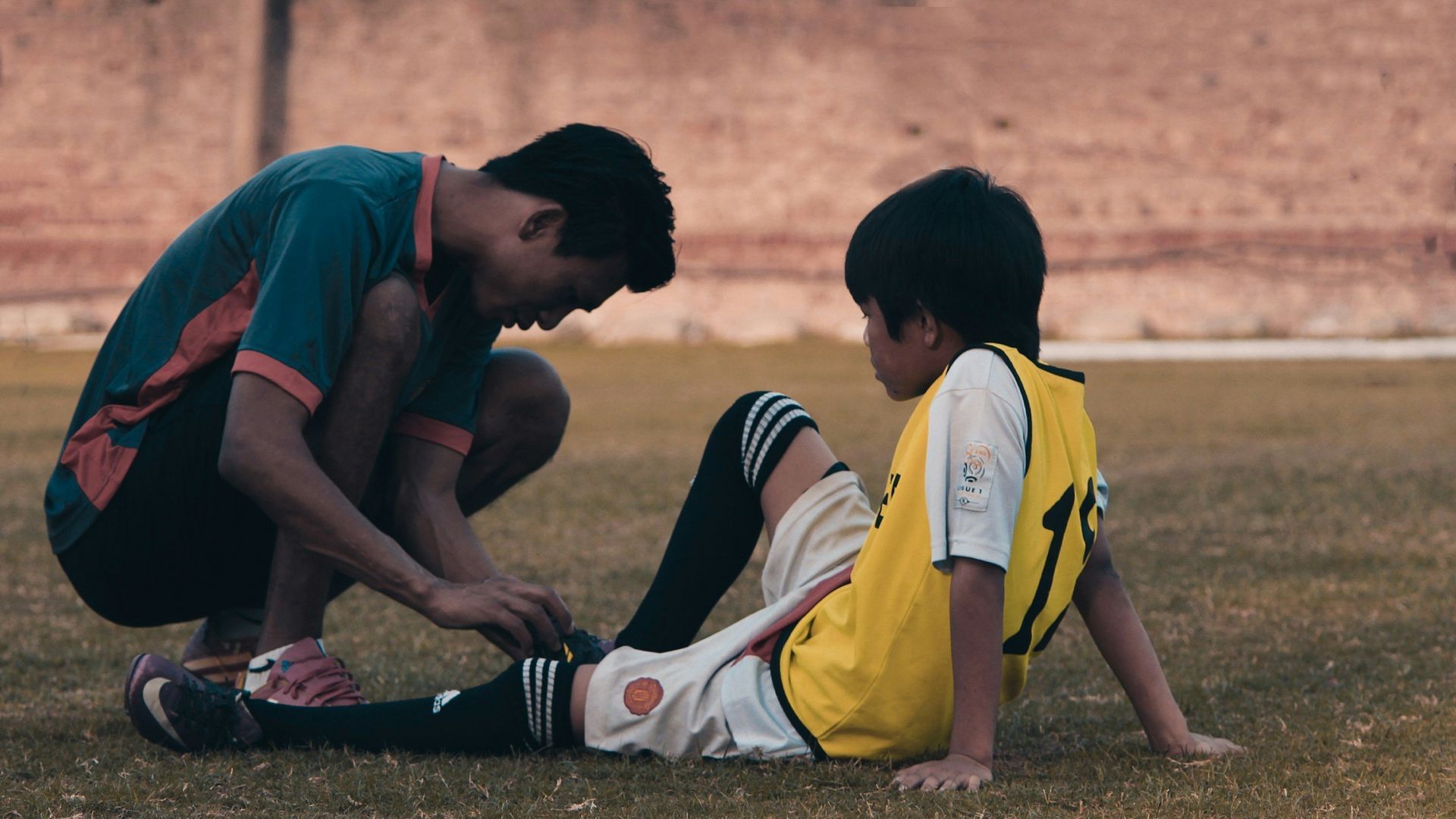
What to Do Immediately After an Injury: More Than Just Rest After an injury, it’s tempting to immediately rest, ice, and stretch the area or avoid using it altogether. While this may seem like the safest approach, it’s not always the most effective way to promote healing. Instead of relying solely on rest, medication, or ice, there are more proactive steps you can take to support recovery and regain function. One of the best ways to help an injured area recover is through isometric exercises, where you activate muscles without moving the joint. Isometrics are great for maintaining strength and encouraging blood flow to the injured tissue without placing too much stress on it. For example, if you’ve sprained your ankle, you might try gentle isometric exercises by pressing your foot out into the wall, without actually moving your ankle. Once the initial pain starts to subside, introducing gentle loading—small amounts of weight or resistance—can help stimulate the healing process. This loading helps the tissue rebuild itself and strengthens the muscles around the injured area, reducing the risk of re-injury. After an injury, movement is your best friend. Gentle, controlled movements promote circulation and help prevent stiffness. The key is to move the injured area within a pain-free range, gradually increasing the intensity over time. This consistent movement encourages proper healing and ensures that you maintain mobility in the area. If you don’t notice any improvement or if your symptoms get worse, it’s essential to seek medical attention. While self-care strategies like isometrics and early movement can be very effective, some injuries require a professional evaluation to ensure there’s no serious damage. A physical therapist can help guide you through the appropriate steps for healing and offer specific exercises to promote recovery. In conclusion, when it comes to injuries, a proactive approach using isometrics, gentle loading, and frequent movement can help promote healing more effectively than just stretching, resting, or medicating. If there’s limited progress or things get worse, get seen by a medical professional for guidance.

Pain Isn’t Always Where the Problem Lies One of the most common misconceptions about pain is that the source of discomfort is always the problem area. In reality, the location of pain can often be a result of compensation, with the root cause lying elsewhere in the body. Understanding this concept is crucial to addressing the underlying issues behind pain and achieving long-lasting relief. Compensation and Movement Patterns When the body experiences pain or weakness in one area, it often compensates by adjusting its movement patterns. For example, knee pain might actually stem from issues in the hips or ankles, as those joints may not be moving optimally. As a result, the knee bears the brunt of the strain, even though it isn’t the root cause of the dysfunction. This compensation mechanism is the body’s way of protecting itself, but over the long term can lead to pain in areas away from the actual source of the problem. Treating the Root Cause, Not Just the Symptoms To achieve effective relief, it’s essential to address the root cause of the pain rather than just treating the symptoms. A comprehensive assessment by a physical therapist can help identify where the source of the issue originates. By focusing on the source, whether it’s a weakness, mobility restriction, or imbalance, you can resolve the issue AND prevent the pain from returning. This approach leads to more sustainable results and reduces the risk of chronic pain or recurring injuries. The Bigger Picture in Recovery Understanding that pain may not be where the problem lies is empowering for long-term recovery. Instead of chasing symptoms, you can focus on improving the overall function of your body. By restoring balance, addressing compensations, and working on the root causes, you’ll experience improved mobility and reduced discomfort over time. The location of pain often doesn’t tell the whole story. Pain is frequently a sign of compensation, and addressing the underlying causes is key to achieving lasting relief. By looking beyond the pain site, you can target the real issue and improve your overall movement health.

Embracing Discomfort in the Rehab Process The road to recovery isn’t always smooth, and discomfort during the rehab process is not only normal, but can also be a sign that you're progressing. While it’s important to distinguish between discomfort and pain, experiencing some level of challenge is often necessary for healing and rebuilding strength. Learning to embrace this discomfort, without pushing too far, can help you achieve better long-term results. Understanding Productive Discomfort When undergoing physical therapy or rehabilitation, discomfort typically arises when the body is challenged to adapt to new movements or regain mobility. This kind of discomfort is productive—it signals that your body is working to heal, strengthen, and improve. Whether it’s stretching tight muscles or rebuilding strength after an injury, mild discomfort is often a positive sign that you’re pushing the right limits without causing damage. Finding the Balance It’s essential to understand the difference between discomfort that helps and pain that harms. Productive discomfort feels manageable, and while it may be challenging, it should not cause sharp, sudden, or severe pain. Working with a physical therapist can help you learn where your boundaries are and how to safely challenge yourself. Knowing when to push through mild discomfort and when to ease back ensures that you’re progressing without risking injury. Long-Term Benefits of Embracing Discomfort Allowing yourself to experience some discomfort during rehab can lead to better outcomes. By pushing your body beyond its comfort zone, you promote tissue healing, improve flexibility, and rebuild strength. Over time, this process leads to greater mobility and function. The key is consistency—by embracing discomfort in a controlled, guided way, you lay the foundation for long-term resilience. In summary, discomfort in the rehab process is a normal and necessary part of healing. When approached safely and with guidance, this discomfort can help you make significant progress and reach your movement goals.
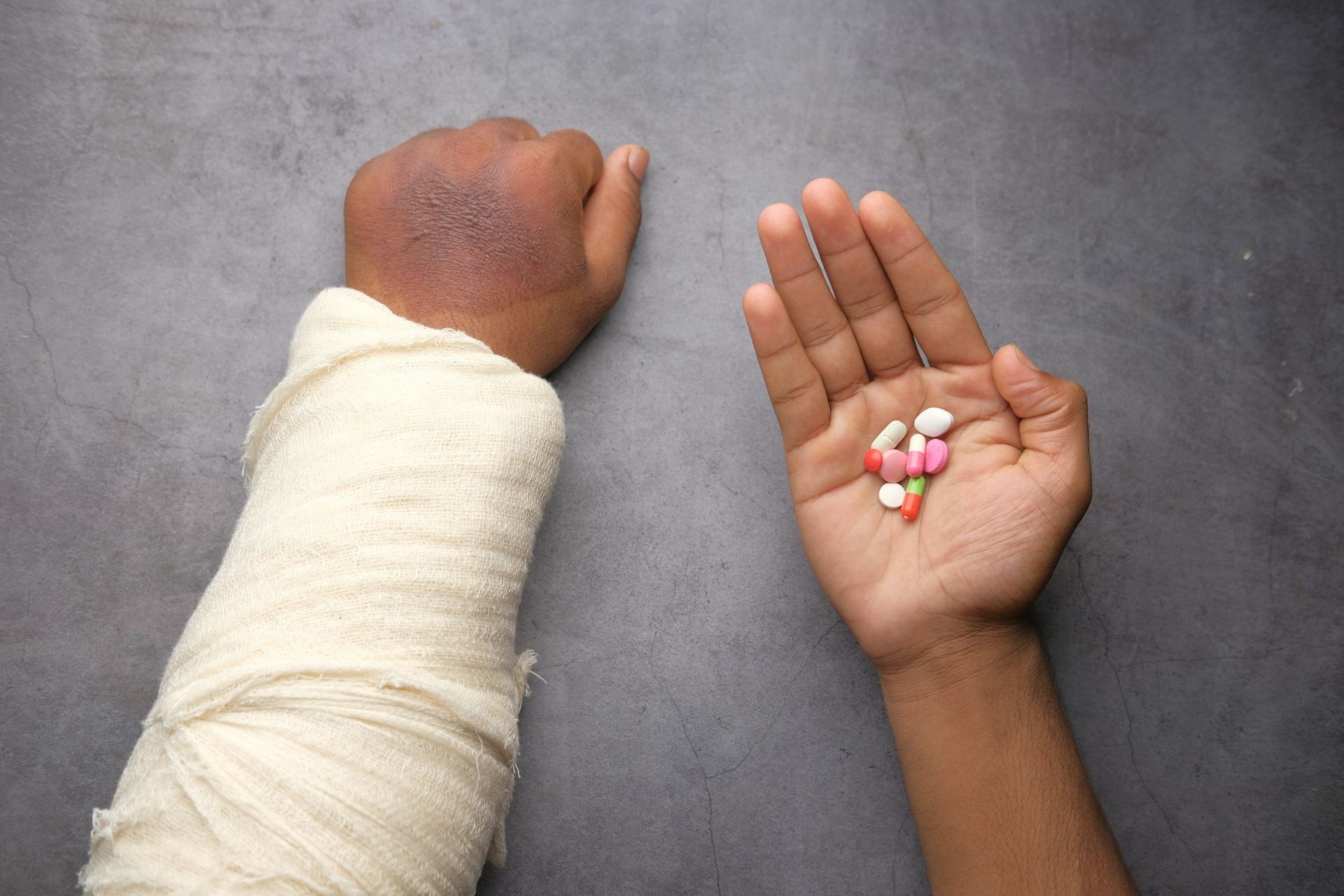
Understanding Inflammation: Friend and Foe in Healing Inflammation often gets a bad rap, but it's a crucial component of the body's healing process. When you experience an injury or infection, your body initially responds with inflammation to protect and heal the affected area. This response involves increased blood flow, immune cell activation, and the release of various healing cascades. Inflammation helps to clear out damaged cells, pathogens, and other harmful substances, setting the stage for tissue repair and recovery. However, it's essential to understand the delicate balance of this process and how to manage it effectively. While inflammation is necessary for healing, the use of anti-inflammatory medications, such as NSAIDs (nonsteroidal anti-inflammatory drugs), can sometimes interfere with this natural process. These medications work by blocking certain chemicals involved in the inflammatory response, thereby reducing pain and swelling. However, by reducing inflammation too much, these drugs can also slow down the removal of damaged cells and delay healing. It's important to use anti-inflammatories judiciously, under the guidance of a healthcare professional, to ensure they do not impede the healing process. Beyond medications, there are several lifestyle factors that can help modulate inflammation positively. Exercise is a powerful tool in managing inflammation. Regular, moderate physical activity can reduce chronic inflammation by improving circulation, enhancing immune function, and promoting the release of anti-inflammatory molecules. However, it's crucial to balance exercise intensity and rest to prevent overtraining, which can cause higher levels of inflammation. Sleep is another critical factor in managing inflammation. During sleep, your body undergoes various restorative processes, including the regulation of inflammatory responses. Poor sleep quality or insufficient sleep can increase inflammatory markers and impair recovery. Prioritizing good sleep hygiene—such as maintaining a consistent sleep schedule, creating a restful environment, and avoiding stimulants before bedtime—can significantly enhance your body's ability to manage inflammation. Nutrition also plays a vital role in modulating inflammation. A diet rich in anti-inflammatory foods, such as fruits, vegetables, whole grains, lean proteins, and healthy fats, can help reduce chronic inflammation. Foods high in antioxidants, omega-3 fatty acids, and fiber are particularly beneficial. On the other hand, limiting the intake of processed foods, sugars, and unhealthy fats can cause an exacerbation of inflammatory processes. Staying hydrated and avoiding excessive alcohol consumption also contribute to better inflammatory control. Understanding inflammation as both a crucial healing mechanism and a potential source of chronic issues is key to managing your health effectively. By balancing the use of anti-inflammatory medications with lifestyle modifications like exercise, sleep, and nutrition, you can support your body's natural healing processes while minimizing unnecessary inflammation. This holistic approach will not only enhance your recovery from injuries but also promote overall wellness and performance.

Navigating Pain With Exercise Exercising in the presence of pain can be a complex topic, as not all pain should be viewed the same way. Pain is the body's way of signaling that something needs attention, but it's important to distinguish between what type of pain you are experiencing. Acute pain, which tends to be more sharp and sudden, often indicates an injury and should be addressed immediately. On the other hand, mild to moderate discomfort during exercise can be a normal part of physical exertion and the body's adaptation process. Understanding the difference between these types of pain is crucial for anyone engaged in physical activity. There is a common misconception that all pain should be avoided, leading some to completely halt their exercise routines at the first sign of discomfort. However, this approach can sometimes hinder progress, especially in rehabilitation or performance training. For instance, muscle soreness after a workout is a normal and typically harmless response to increased physical activity. This type of pain, known as delayed onset muscle soreness (DOMS), usually resolves within a few days and can be managed with proper recovery techniques. In contrast, persistent or severe pain that doesn't improve with rest may indicate a more serious issue that requires professional evaluation. It's essential to approach exercise with a nuanced perspective on pain, recognizing when to push through discomfort and when to seek help. Working with a physical therapist can help you navigate these challenges, ensuring that your exercise program is both effective and safe. Bend Movement PT frequently provides individualized guidance on how to modify activities, manage pain, and progress your training without exacerbating any underlying conditions.
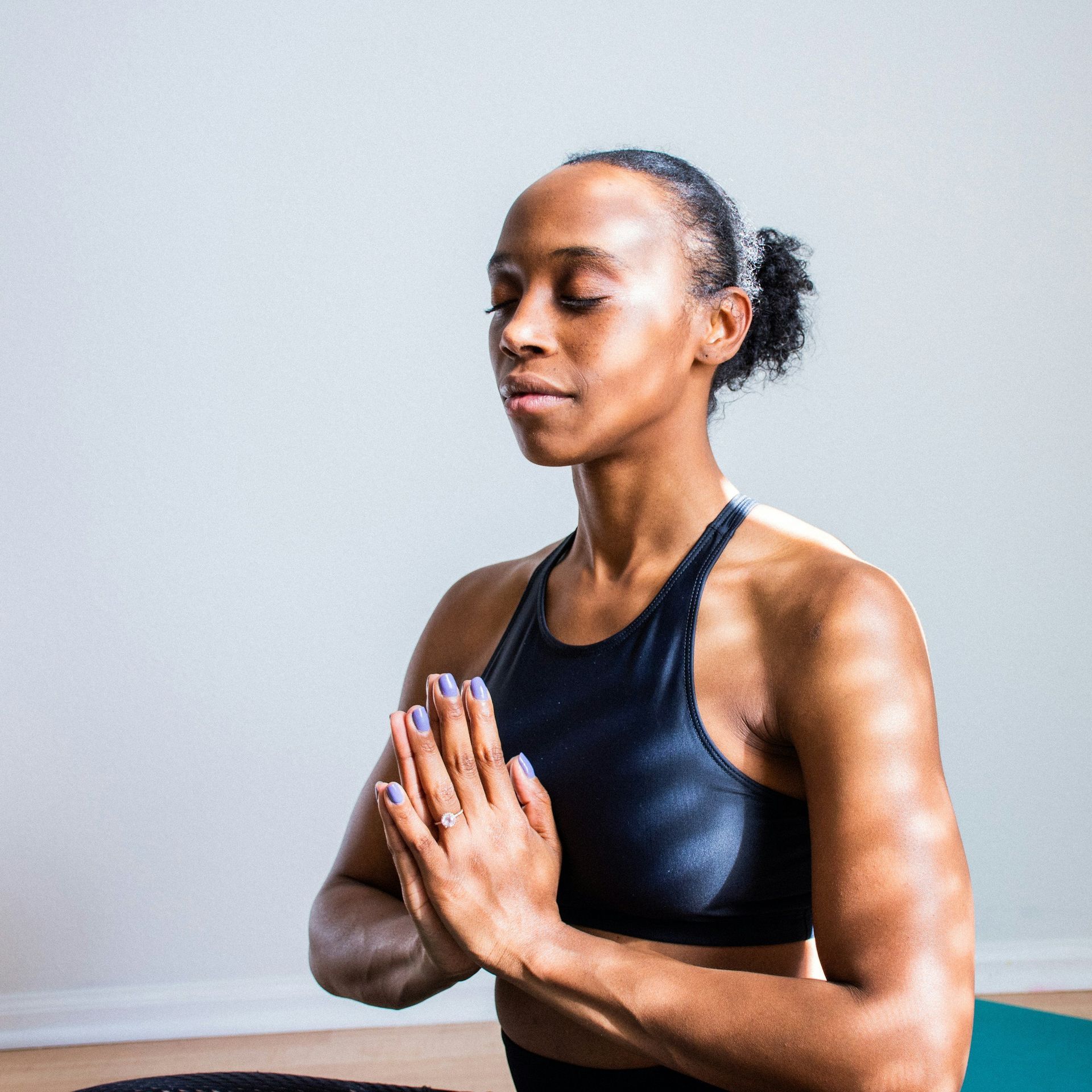
Embracing Injury: A Journey to Understanding Your Body and Movement Injuries are often viewed as setbacks that disrupt our fitness routines and challenge our physical abilities. However, hidden within the frustration and discomfort lies a valuable opportunity for growth and self-discovery. In this blog post, we'll explore how experiencing an injury can be a chance to deepen your understanding of your bodies and movement, ultimately leading to greater resilience, awareness, and appreciation for your physical capabilities. A Shift in Perspective: When faced with an injury, it's natural to feel discouraged and disheartened. However, reframing your perspective can transform your experience from one of frustration to one of curiosity and discovery. Instead of viewing the injury as a roadblock, see it as an opportunity to learn more about your body and how it moves. Understanding Your Body's Signals: Injuries often arise from imbalances, weaknesses, or compensatory movement patterns that have gone unaddressed. By frequently tuning into your body's signals and paying attention to areas of discomfort or tension, you can uncover underlying issues and gain valuable insights into how your body functions. Exploring Movement Patterns: During your recovery process, take the time to explore different movement patterns and exercises that don't aggravate your injury. Experiment with gentle mobility exercises, mindful stretching, and low-impact activities to maintain movement and prevent deconditioning while allowing your body to heal. Seeking Professional Guidance: Consulting with a qualified healthcare professional or movement specialist can provide invaluable guidance and support during the injury recovery process. Physical therapists can assess your movement patterns, identify areas of weakness or dysfunction, and design a personalized rehabilitation program to address your specific needs. Bend Movement PT offers direct 1-on-1 care every single visit for an entire hour to dive into your individual goals, limitations, and to get you moving and feeling better. Building Resilience and Awareness: As you progress through the recovery journey, you'll develop a deeper sense of resilience and awareness in your body. By listening to your body's signals, respecting its limitations, and gradually reintroducing movement and exercise, you'll cultivate a greater appreciation for the intricacies of your physical capabilities and the interconnectedness of the human body. Embracing the Journey: Ultimately, experiencing an injury is a journey of self-discovery and growth. Embrace the opportunity to learn more about your body, its strengths and limitations, and the importance of mindful movement and self-care. By approaching the recovery process with patience, curiosity, and compassion, you'll emerge stronger, more resilient, and better equipped to navigate future challenges. Injuries are not just setbacks; they are opportunities for growth, learning, and self-discovery. Shift your perspective, tune into your bodies, seek professional guidance when appropriate, and embrace the journey of recovery. We can deepen our understanding of our bodies and movement, ultimately leading to greater resilience, awareness, and appreciation for our physical capabilities. So, the next time you find yourself facing an injury, remember that it's not the end of the road—it's the beginning of a new chapter in your journey toward optimal health and well-being.

Ankle Sprains: Rethinking Recovery and Embracing Movement Ankle sprains are one of the most common injuries, affecting individuals of all ages and activity levels. Traditionally, the go-to approach for treating ankle sprains has been the RICE protocol (Rest, Ice, Compression, Elevation). However, recent developments in sports medicine have led to a shift in perspective, encouraging early movement and progressive strengthening to optimize recovery. In this blog post, we'll explore the updated approach to ankle sprains, emphasizing the importance of early movement, debunking the RICE protocol, and outlining strategies for strengthening and stabilizing the ankles and hips to prevent future injuries. Rethinking Recovery: The conventional wisdom surrounding ankle sprains has long advocated for rest and immobilization as the primary means of recovery. However, emerging research suggests that early movement and activity actually promotes better outcomes and faster healing. Debunking the RICE Protocol: The RICE protocol, once considered the gold standard for treating acute injuries like ankle sprains, has recently come under scrutiny. Dr. Gabe Mirkin, the physician who coined the term RICE in 1978, has recanted his recommendation for rest and ice, stating that both may delay healing and impair long-term recovery. Embracing Early Movement: Instead of immobilizing the injured ankle, you should aim to establish early movement with light exercise to promote blood flow, reduce swelling, and prevent stiffness. Gentle range of motion exercises, ankle circles, and toe raises can help maintain mobility and prevent muscle atrophy during the initial stages of recovery. Progressing into Strengthening and Stabilizing: As the initial acute phase of the injury subsides, it's essential to transition into a progressive strengthening and stabilization program to rebuild strength, mobility, and proprioception in the ankle and surrounding muscles. Balance and Proprioception Exercises: Incorporate balance and proprioception exercises such as single-leg balance, wobble board drills, and training on uneven surfaces to improve ankle stability and joint awareness. Ankle Strengthening Exercises: Focus on strengthening the muscles surrounding the ankle, including the calf muscles (gastrocnemius and soleus), peroneal muscles (outside of your shin), and anterior tibialis (front of your shin). Exercises like calf raises, ankle dorsiflexion and plantarflexion, and weight shifting can encourage strengthening of the affected area. Hip Strengthening Exercises: Don't forget about the hips! Weakness in the hip muscles can contribute to poor lower limb alignment and increase the risk of ankle sprains. Incorporate hip strengthening exercises such as hip bridges, wall clamshells, and kickstand hip hinges to improve hip stability and alignment. Gradual Return to Activity: As you progress through your rehabilitation program, gradually reintroduce functional activities and sports-specific movements to prepare your ankle for a safe return to activity. Start with low-impact activities and gradually increase intensity and duration as your strength and stability improve. In conclusion, the traditional approach to treating ankle sprains with rest and immobilization is evolving. Instead, embrace early movement and transition into a progressive strengthening and stabilization program can optimize recovery, reduce the risk of reinjury, and promote long-term ankle health. Consult with Bend Movement Physical Therapy in Richmond/Henrico for personalized guidance and recommendations based on your specific injury and rehabilitation needs!
